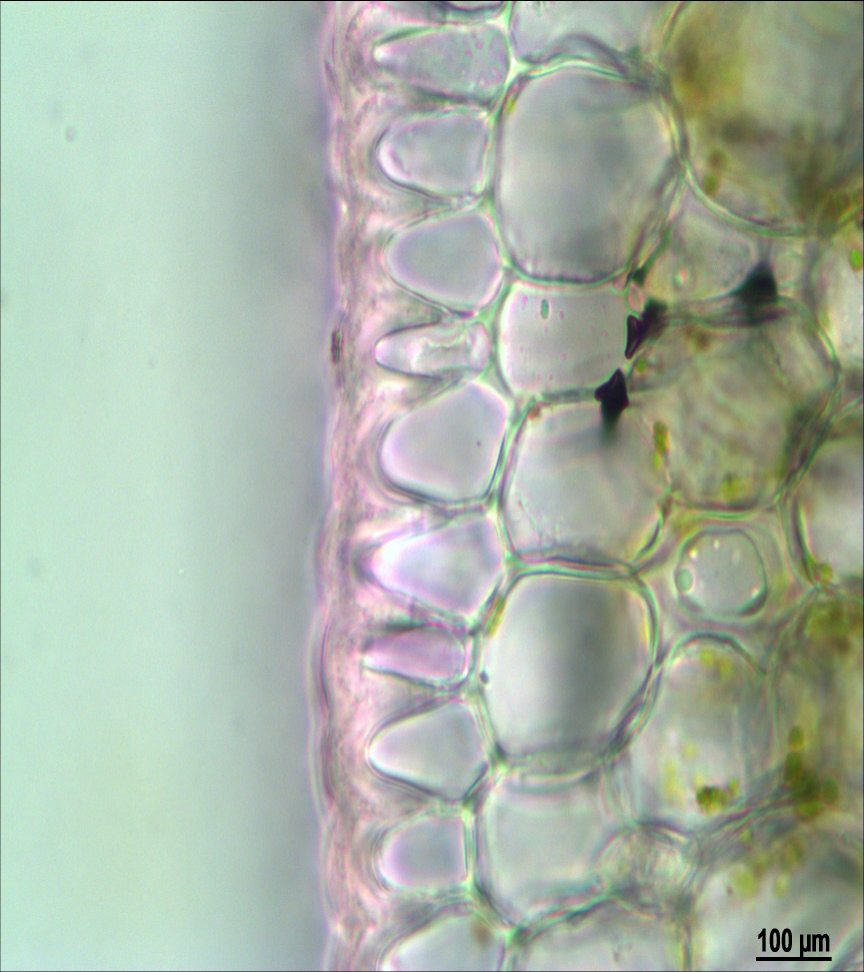Anatomical features of the leaves of Sansevieria thyrsiflora Thunb. and S. grandis Hook. f. (Dracenaceae)
Abstract
The comparative morphological and anatomical investigations of the leaves in the genus Sansevieria Thunb. on example of species S. thyrsiflora Thunb. and S. grandis Hook. f., which are critical for systematics of this taxon, were carried out. There were found a few characters which are identical for the leaves structure in both species. In addition, some important features of the leaves morphology and anatomy were reaveled to be considerably modified in both comparable species. In particular, they could be differed from each other by the following characters: the leaves organography, the form of transversal projections of the epidermal cells, the degree of thickening of both outer and lateral cellular walls, the degree of the development of sclerenchyma fibers as well as their placing manner, the ability to accumulate oils.
References
Шкрум І.В, Гайдаржи М.М., Баданіна В.А. 2011. Анатомо-морфологічні і органографічні особливості листків рослин роду Sansevieria Thunb. (Dracenaceae). Вісник КНУ ім. Тараса Шевченка 29: 70–72. Eggli U. 2001. Illustrated Handbook of Succulent Plents: Monocotyledons. Springer-Verlag, Berlin, Heidelberg, New York.
Chahinian B.J. 2005. The splendid Sansivieria. An account of the species. Buenos Aires.
Forbes P.L. & Munday J. 1981. Epidermal structure in two species of Sansevieria Thunb. (Liliaceae). Annu. Conf. Electron Microsc. Soc. South.-Afr. 11: 145–146.
Koller A.L. & Rost T.L. 1988a. Leaf anatomy in Sansevieria (Agavaceae). Amer. J. Bot. 75 (5): 615–663.
Koller A.L. & Rost T.L. 1988b. Structural analysis of water storage tissue in leaves of Sansevieria (Agavaceae). Bot. Gaz. 149 (3): 260–274.


This work is licensed under a Creative Commons Attribution-NonCommercial-NoDerivatives 4.0 International License.
The journal is licensed by Creative Commons under BY-NC-ND license. You are welcome and free to share (copy and redistribute the material in any medium or format) all the published materials. You may not use the material for commercial purposes. You must give appropriate credit to all published materials.
The journal allow the author(s) to hold the copyrights and to retain publishing rights without any restrictions. This is also indicated at the bottom of each article.





